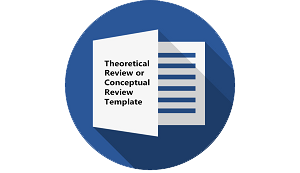LANGUAGE BY GENDER IN AUDIOVISUAL ON BRIDGERTON SERIES
DOI:
https://doi.org/10.30957/ijoltl.v8i1.726Keywords:
women language features; audiovisual; expressionAbstract
This research aimed to find out women’s language features that used by female characters in Bridgerton series and how expressions affect in women language. This research used Lakoff’s theory (1975) on women’s language features and Baker’s theory (2001) on semiotic channels. This research was using descriptive qualitative method and used note-taking as a technique to find the data. There were nine out of ten types of women language features used by female characters in Bridgerton Series. From ten women’s language features mentioned by Lakoff (1975), only nine women's language features appeared in Bridgerton series. Based on the research, lexical hedges or filler became the dominant type of women’s language features uttered in this drama, From ten women’s language features mentioned by Lakoff (1975), only nine women's language features appeared in Bridgerton series. They are lexical hedges or fillers (34), tag question (4), rising intonation on declaratives (16), empty adjectives (11), intensifiers (5), hypercorrect grammar (4), super polite forms (7), avoid to use strong or swear words (9), and emphatic stress (7). The lexical hedges or fillers feature is most often used by the female characters in this drama, because they need time to express their feelings so that the conversation keep going.
Downloads
References
Baker, M. (2018). In other words: A coursebook on translation. Routledge.
Cherry, Kendra. (2022). Types of Nonverbal Communication. Retrieved October 25, 2022, from https://www.verywellmind.com/types-of-nonverbal-communication-2795397
Common, Creative. (2013). Communication in the Real World: An Introduction to Communication Studies. United States: M Libraries Publishing.
Ehrlich, S. (2014). Language, gender, and sexual violence. The Handbook of Language, Gender, and Sexuality, 452-470.
Goddard, A., Patterson, L. M., & Mean, L. (2000). Language and gender. Psychology Press.
Kothari, C. R. (2004). Research methodology: Methods and techniques. New Age International.
Lakoff, Robin. (2001). Language and Woman’s Place. London: Cambridge University Press.
Litosseliti, Lia. (2006). Language and Gender Theory and Practice. London: Routledge Taylor and Francis Group.
Nordquist, Richard. (2020). What are Swear Words and What are They Used for. Retrieved October 27, 2022, from https://www.thoughtco.com/swear-word-term
Oktapiani, Tika & Natsir, M., Setyowati, Ririn. (2017). Women’s Language Features Found in Female Character’s Utterances in The Devil Wears Prada Movie. Media Neliti, 1(3). 209-211. https://media.neliti.com/media/publications/240579-womens-language-features-found-in-female-644f59d6.pdf
Sooriya, P. (2017). Nonverbal Communication. United States: Laxmi Book Publication.
Downloads
Published
How to Cite
Issue
Section
License
Authors who publish with this journal agree to the following terms:
- Authors retain copyright and grant the journal right of first publication with the work simultaneously licensed under a Creative Commons Attribution-ShareAlike 4.0 International License that allows others to share the work with an acknowledgement of the work's authorship and initial publication in this journal.
- Authors are able to enter into separate, additional contractual arrangements for the non-exclusive distribution of the journal's published version of the work (e.g., post it to an institutional repository or publish it in a book), with an acknowledgement of its initial publication in this journal.
- Authors are permitted and encouraged to post their work online (e.g., in institutional repositories or on their website) prior to and during the submission process, as it can lead to productive exchanges, as well as earlier and greater citation of published work (See The Effect of Open Access).












